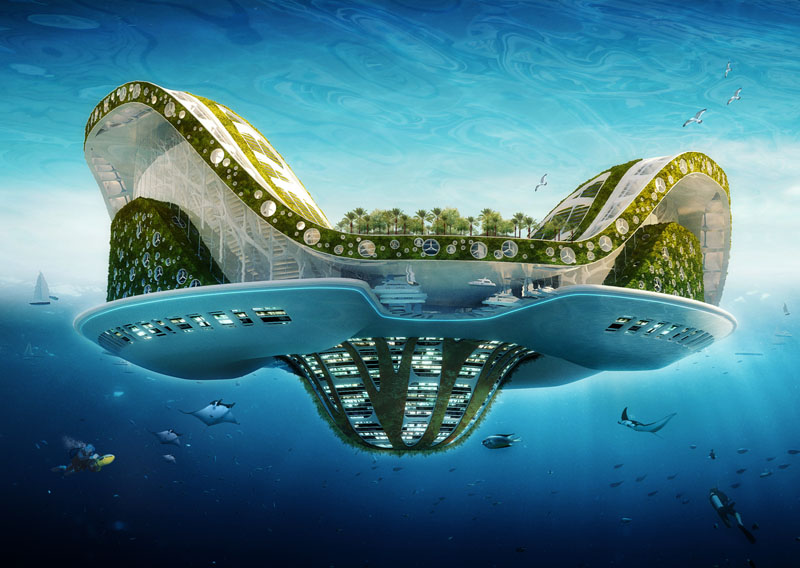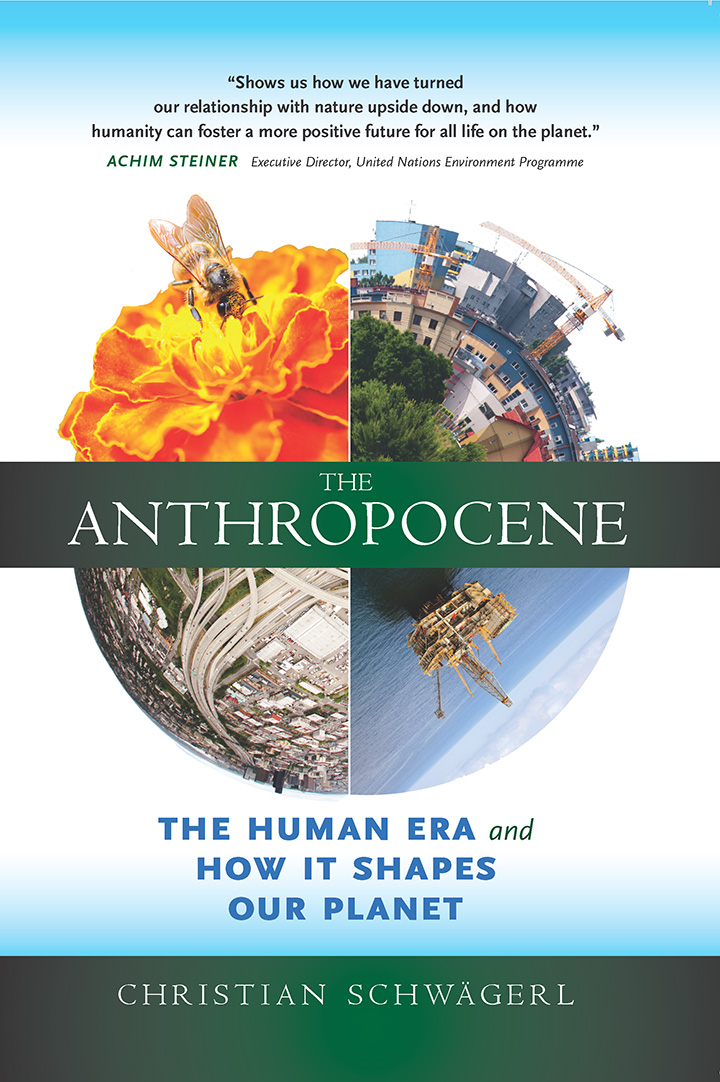The following was excerpted from a new title from Synergetic Press called “The Anthropocene: The Human Era & How it Shapes our Planet.” This book, a visionary yet pragmatic and comprehensive exploration of the biggest questions we face as a species, is the fruit of 7 years research by award winning science and environment writer Christian Schwägerl.
At the beginning of the Anthropocene, the issue is whether the extremely young technosphere overruns and conquers the biosphere or, by its example, learns how to constantly recycle material. This requires the important virtues of frugality and moderation in consumption because only by consuming less in the short term will we cause less waste. It is also important to improve the efficiency of equipment. This has its limits, however: when an oversized SUV uses five per cent less fuel and will be replaced by a new one within a short time, nothing is won. Besides, improvements in efficiency are often counterbalanced by more consumption: people just buy bigger models of energy-saving refrigerators, an outcome known as “rebound effect.” To simply count on efficiency means, as Michael Braungart puts it, “to destroy the planet more slowly and more thoroughly.” This follows the logic that, using the wrong technology, only wrong things can happen in the long term no matter how efficiently or frugally they are implemented.
Future technology has to consist of machines, materials and molecules that adapt to the biologic cycles of earth instead of perturbing them, and they have to enrich earth with life-enhancing stimuli instead of discharging poisons.
What is needed, therefore, is a different, new “nature of technology,” an evolution whereby technology adapts to its environment. The more scientists reveal nature’s inner mechanisms, the more primitive today’s technology looks in comparison. Brian Arthur, the American technology theorist, sees natural mechanisms, materials and designs as role models for future technology: “Living things give us a glimpse of how far technology has yet to go. No engineering technology is remotely as complicated in its workings as the cell.” Arthur sees the future of technology as “self-healing, self-configuring, cognitive,” and “organic.”
Seen from the perspective of a future bio-technosphere, today’s wasteful machines appear to be rudimentary organisms with outdated cycles in urgent need of improvement. Fuel-guzzling Porsches or SUVs, coal-fired power plants and persistent plastic seem to be old-fashioned leftovers from the Holocene, about as impressive as horse carriages and typewriters. Cars of the future would either decompose into material that boosts the environment or give way to other, networked kinds of transport. The guiding principle in this process might be called bioadaptation: using nature as a source to “breed” machines.
A rapid transition from fossil and nuclear, that is, from degenerative energy sources to renewable energy sources emerges as an absolute priority in this perspective, as do large-scale programs to extract carbon from the atmosphere in a biological way, with the help of restored woods and moors. According to what scientists have stipulated, if we are to reduce
carbon emissions by eighty per cent by 2050 and, if only an additional 269 billion tons of carbon dioxide is allowed to end up in the atmosphere in this century, then our first priority is to put all technology to this use.
This could be the starting point of a far greater transformation to a completely regenerative economy, a closed cycle economy, in which the term waste no longer means anything. If products were built so that they could be turned back into raw materials for the next generation they would be easier to repair and upgrade than they are today. These products could be made from plant-based materials optimized by biotechnology. Or they could be synthetic and feature organic characteristics created through biomimicry. Innovative recycling plants could be fed with entire scrap heaps from the past to be processed into new raw materials through urban mining. Plastic recycling would become a source of raw material, making it superfluous to drill new oil platforms in the deep sea or in the Arctic. New chemical substances would absorb toxic substances and render them harmless.
– The bioadaptive imagination of scientists is only just gathering momentum:
– Compostable cars; synthetic materials that turn into nutrients when they dissolve
– Machines made of organic material that could easily be recycled
– Electrodes that work with endogenous substances
– Colorants following the role model of butterflies
– Substitute plastic made of insect protein
– Biodegradable electronics
– Robots that feed off plastic waste
– Nanomagnetic designer particles that extract phosphorus and other critically important elements from wastewater
– Buildings inspired by deep-sea sponges
– Power plants that imitate photosynthesis
– Bacteria that produce fuel and construction materials
– Signal transmission in silk threads
The transformation could go even deeper: genetic algorithms in the future could enable much more complex calculation processes than digital ones; biological nanomaterials could significantly reduce the necessity to use metal and finally, DNA—the very stuff of which life is made—could prove to be superior in information storage, making DNA computers a reality.
The principle of bioadaptation is suited to giving technology a different character: from being an opponent of the earth system to a symbiont. That doesn’t mean that a world in harmony with nature would result as bioadaptation alone doesn’t guarantee gentler technology nor are the products of biological evolution intrinsically good or moral. When technology and life interweave, questions of design and control become even more complicated than they are today with classic technology. Applications of bioadaptation can be negative or hazardous. That has been shown with micro-drones in the form of insects or birds that have been developed for surveillance, or in the four-legged robots from Boston Dynamics that are being designed as futuristic beasts of burden for the US military., ,
But without bioadaptation, the technosphere will soon be not just a foreign entity in the earth system: the earth as a whole will transform into a foreign entity. One of the characteristics of technology, so it seems, is that while there is a solution for every problem, every solution introduces a new problem. The question now is whether we try to solve old problems with old technology, as in the so-called shale gas revolution; or whether we are ready to move on to new problems with new technology.
















